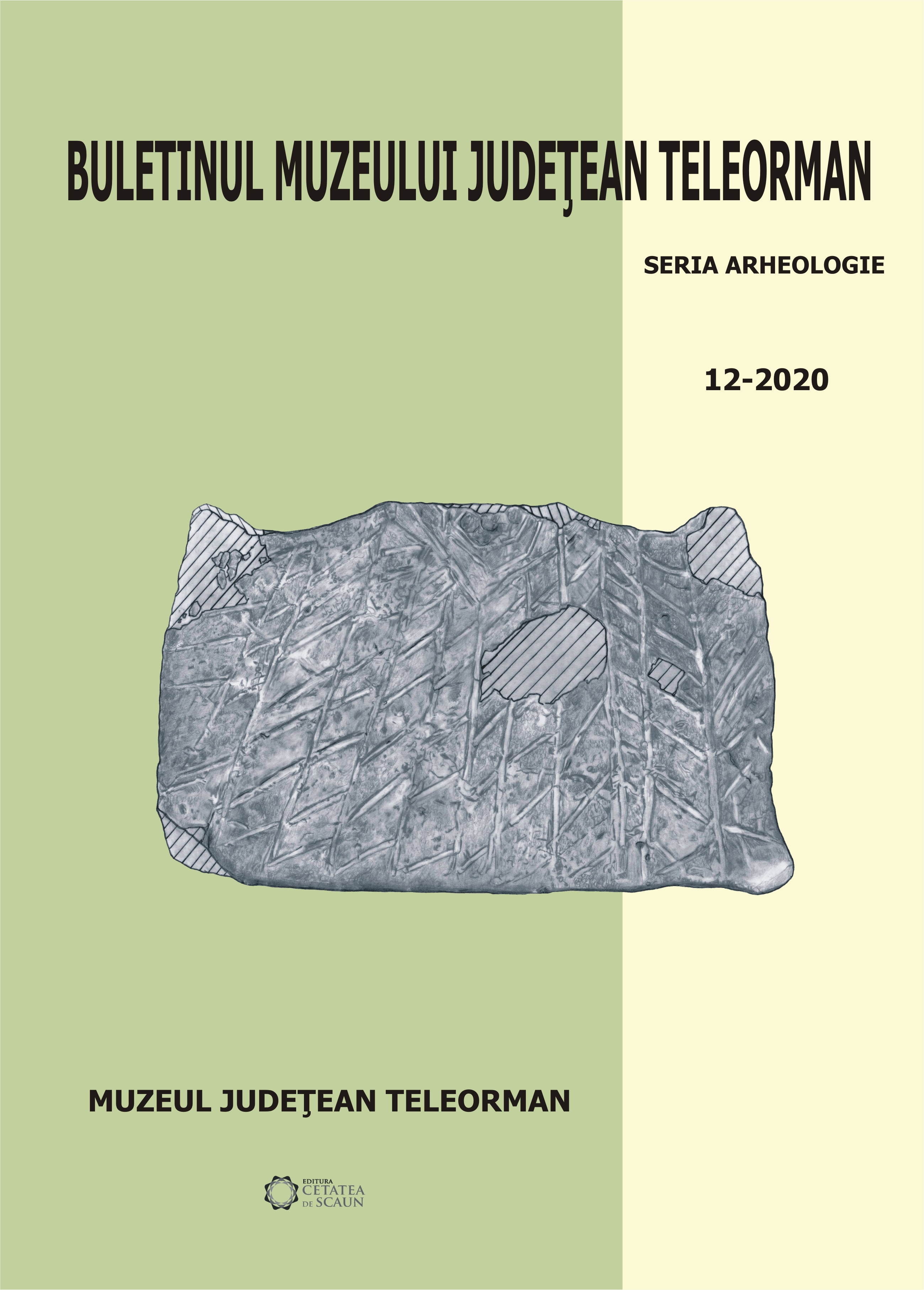Tăbliţa ceramică de la Alexandria ‘Limonagiul’ (V.V. 07), jud. Teleorman
The ceramic tablet from Alexandria ‘Limonagiul’ (V.V. 07), Teleorman County
Author(s): Ion TorcicăSubject(s): Archaeology, Prehistory
Published by: Editura Cetatea de Scaun
Keywords: Alexandria ‘Limonagiul’ (V.V. O7); ceramic tablet; Gumelniţa culture;
Summary/Abstract: The site of Alexandria ‘Limonagiul’ (V.V. 07) is located near the modern town of Alexandria (Teleorman County), on the eastern high terrace, on the left side of the Vedea River. It was discovered in 2008, and since 2019 a rescue excavation has been carried out on the site. Several Eneolithic (Gumelniţa culture, A1 phase) and Bronze Age pits, a hut from 5th-7th century AD and another from 20th century were excavated. The large Eneolithic complexes are filled by successive layers of sediment, 0.20-0.30 m thick, consisting of large amounts of archaeological material, mainly pottery and animal bones. A ceramic tablet was discovered in 2019 in a pit (C. 3). The tablet is of medium size, and has a rectangular shape with convex sides, and a flattened base. At the lower corners there are two lateral, conical endings, and at the upper corner protuberances similar to the consecration horns. Both sides and edges are decorated by incisions but not the base. The decorative motifs on the sides consist of lines and stripes vertically and obliquely disposed. On the frontal side, on the middle of the upper part, is a decoration showing concentric lines, similar to the motifs found around the neck of some Gumelniţa anthropomorphic statuettes. About 30 ceramic tablets have been discovered in Bulgaria, but only two have been discovered north of the Danube, one at Alexandria ‘Limonagiul’ (V.V. 07) and the other at Pietrele tell settlement (Giurgiu County). Interpreted by certain scholars as altar-tablets, they are considered stylized models of houses or sanctuary pediments, or facades of houses on pillars, decorated with various symbols. Based on the morphological and decorative features, the tablet form Alexandria can be considered a schematic representation of a house or sanctuary structure, raised on pillars, with anthropomorphic attributes or even representing a schematic female figure.
Journal: Buletinul Muzeului Judeţean Teleorman
- Issue Year: 2020
- Issue No: 12
- Page Range: 5-18
- Page Count: 14
- Language: Romanian

